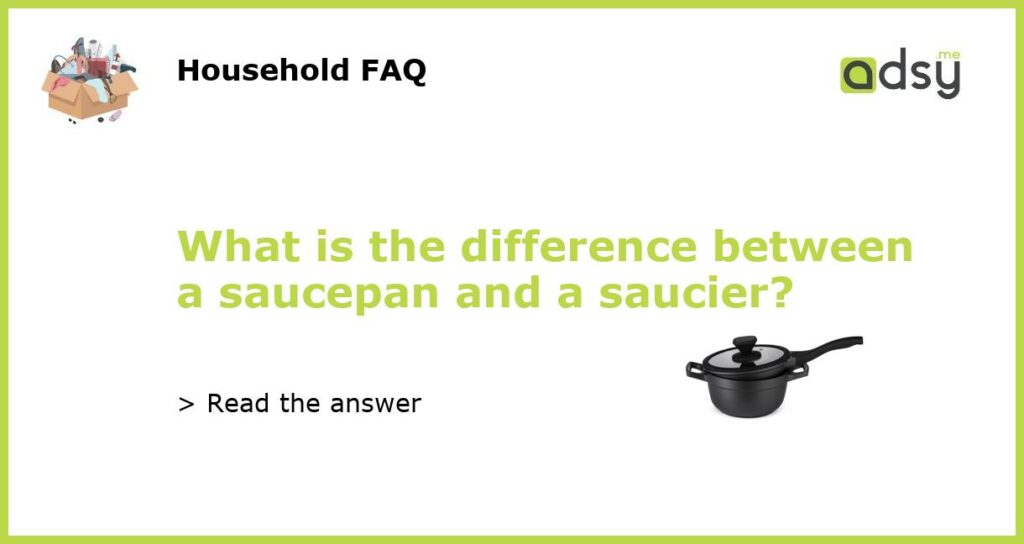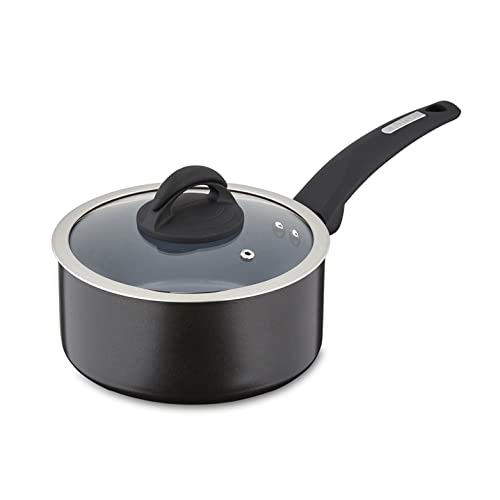What is the difference between a saucepan and a saucier?
When it comes to cooking, having the right tools is essential. Two popular kitchen utensils that are often used interchangeably are saucepans and sauciers. While they may seem similar, there are key differences between the two that can greatly impact your cooking experience. In this article, we will explore the dissimilarities between a saucepan and a saucier, helping you understand which one is best suited for your culinary needs.
Saucepan: Versatile and Efficient
A saucepan is a staple in most kitchens. It is a deep cooking vessel with straight sides and a long handle, which makes it easy to maneuver on the stove. Saucepans come in various sizes, with capacities ranging from one to six quarts. They are typically made of materials such as stainless steel, aluminum, or copper.
One of the key features of a saucepan is its versatility. It can be used for a wide range of cooking methods, including boiling, simmering, sautéing, and making sauces. The straight sides of a saucepan allow for efficient heat distribution, ensuring that your food cooks evenly. The long handle provides a secure grip and keeps your hands away from the heat source.
A saucepan is an ideal choice for cooking dishes that require a large amount of liquid, such as soups, stews, and pasta. Its deep sides prevent spills and splatters, making it easier to contain the contents. The wide opening also allows for easy stirring and whisking.
Saucier: Specialized and Precise
The saucier, on the other hand, is a specialized pan designed specifically for making sauces. It has a rounded bottom and curved sides, which help prevent ingredients from sticking to the edges and corners. The saucier also has a long handle and a wide opening, similar to a saucepan.
One of the key advantages of a saucier is its ability to distribute heat more evenly compared to a saucepan. The curved sides allow for better circulation and prevent hot spots, ensuring that your sauces cook consistently. The rounded bottom also allows for easy whisking and stirring, making it easier to achieve smooth and creamy sauces.
Sauciers are commonly made of materials such as stainless steel and copper, which provide excellent heat conductivity. They come in various sizes, typically ranging from one to four quarts. Some sauciers also have two handles, making it easier to lift and pour.
Which One Should You Choose?
Choosing between a saucepan and a saucier depends on your specific cooking needs. If you’re looking for a versatile and efficient pan that can handle various cooking methods, a saucepan is a great option. Its straight sides and deep design make it suitable for boiling, simmering, sautéing, and making sauces.
On the other hand, if you frequently make sauces and want precise control over the cooking process, a saucier is the way to go. Its curved sides and rounded bottom allow for better heat distribution and easier stirring. It is particularly useful for delicate sauces that require constant whisking.
Regardless of your choice, it’s important to invest in high-quality cookware that is durable and conducts heat effectively. Look for pans with a thick bottom and a comfortable handle for easy use.
Although saucepans and sauciers may appear similar at first glance, they serve different purposes in the kitchen. A saucepan is a versatile and efficient cooking vessel that can handle a wide range of cooking methods, while a saucier is specialized for making sauces, providing more precise heat distribution and easier stirrings. Understanding the differences between the two will help you choose the right pan for your culinary endeavors.






